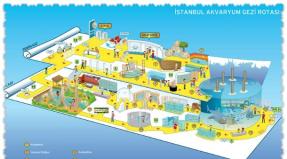The Russian Economy at the Beginning of the 20th Century: Main Development Trends. Russian economy at the beginning of the 20th century Russian economy at the beginning of the 20th century
TOPIC: RUSSIAN EMPIRE AT THE BEGINNING OF THE 20TH CENTURY.
LESSON #5-6. ECONOMIC DEVELOPMENT OF RUSSIA.
The purpose of the lesson: the development trend of the Russian economy.
Lesson objectives: to introduce students to the norms of the economy;
show students the features of the Russian economy;
explain the reasons for Russia's lagging behind the West.
Teaching methods: explanatory and illustrative.
Equipment: board, magnets, illustrations.
LESSON PLAN:
Introduction: actualization of the topic.
Features of the economic development of Russia or the consequences of economic globalization.
3. Reasons for Russia's lagging behind the West.
4. Conclusion, homework.
1. From the course of social science it is known that the economic sphere includes industry, agriculture, trade and banking. The economy provides for the material needs of the population. It is interesting that even a century later there are disputes regarding the economic development of the Russian Empire in the early twentieth century.
For example, “in his article “Russia on the Eve of the Revolution and February 1917” (“Our Contemporary”, 2004, No. 2), the monarchist Mikhail Nazarov who returned to Russia painted a radiant picture of the prosperity of our country at the beginning of the twentieth century. Introduced in 1897, the gold currency remained stable, paper money was exchanged for gold without restrictions. The gold reserve covered paper money by more than 100%, which the countries of the West could not achieve. The state provided loans to key sectors of the economy; Peasant and Noble banks also provided loans.
After the introduction of protectionist customs tariffs, instead of the influx of imported goods into Russia, foreign capital for local production. The average annual growth rate of the economy in Russia has been the highest among developed countries for 25 years. Not only raw materials industries developed, but also advanced ones: chemistry, electrical engineering, mechanical engineering, and aircraft building.
Thanks to the Stolypin reform, the production and export of agricultural products grew rapidly. True, the public debt increased, including external debt, but payments on it amounted to a relatively small percentage of state budget expenditures ... And the rest - in the same spirit ”(Antonov M. Capitalism will not happen in Russia! M .: Yauza, Eksmo, 2005 - S. 565).
It would seem that everything is so: in the 1890s, coal production increased 3 times, oil - 2 times, the output of ferrous metallurgy and engineering increased 3 times, the railway network lengthened 2 times.
But the scientist and publicist S.G. Kara-Murza writes something completely different: “Independent in the last century Russia quickly began to lose independence with the development of capitalism and the strengthening of banks (Kara-Murza S. G. Opposition as a shadow power. M .: Algorithm, 2006 - P. 187).
So we have two positions. First, at the beginning of the 20th century, Russia flourished thanks to new, capitalist relations. Second: the capitalist development of Russia led her to a state catastrophe. Let's try to figure it out. After all, if you look ahead, then in 1917 one of the largest powers in the world - the Russian Empire - collapsed.
2. To understand the question posed, you need to get acquainted with the simplest model of the work of the economic sphere in general.
Imagine a farm producing agricultural products. All products obtained (crop, meat, milk, eggs, wool, etc.) are divided into two parts: a necessary product and a surplus product.
Required Product- this is a product without which it is impossible to restore the economy to its previous volume (reproduction). This product is turned into food, clothing and housing for people, food and buildings for livestock and poultry, seeds for the next harvest, and other things (for example, tools) necessary for agricultural production.
surplus product is a product obtained in excess of the necessary product. The surplus product is used to expand the economy (increase in crops, improve tools, etc.) or to improve the quality of life (household items, etc.).
Farms of the same level of development can coexist for a long time, exchanging surplus product among themselves. But, if one of the farms, for some reason, starts to grow faster, then the situation changes dramatically not in favor of developing more slowly.
A wealthy economy begins to exist at the expense of the labor of less wealthy neighbors. How does this happen?
Suppose you want your crop to be not 100 units, but 300, like a neighbor. To make your dream come true, you need to buy agricultural machinery (truck, combine, tractor, seeders, winnowers, etc.) to cultivate the land. It is clear that poor households do not have the money to purchase them. Money is given by a rich neighbor. But, of course, does not give money for free. Now the harvest has become equal not to 100 units, but to 300, but 50% of the harvest must be given to a rich neighbor. There are 150 units of harvest for own needs.
Please note that the total harvest of you and the neighbor who gave you money for cars has become 600 units (his crop is 300; your crop is 300), but your share in the total yield is only 150 units. The developmental gap between you and him has widened. 450:150 now, and earlier it was 300:100. Now the difference is 300, but it was 200. The neighbor has become stronger, and you have become weaker. Further more! The prospect is dependence on a neighbor, the loss of one's independence. And at your own expense. That's what it is to borrow (loan)!
But how does everything happen in the reality? Let's turn to the history of Russia.
The authorities did not have their own money for the construction of Russian industry, “the state budget was burdened by the costs of maintaining the bureaucratic and police apparatus, a huge army, conducting an aggressive foreign policy, and suppressing popular uprisings” (Orlov A.S., Georgiev V.A. , Georgieva N.G., Sivokhina T.A. History of Russia. Textbook. M .: TK Velbi, Prospekt Publishing House, 2003 - P. 289). Therefore, they turned to foreign sources of funding.
What came of it?
"The strongest arose addiction economic turnover in the country from foreign capital... For the period from 1800 to 1861, foreign investments in Russian enterprises amounted to 232 million rubles. After Russia's transition to the gold currency, they reached 2243 million rubles by 1914 ... ”(Antonov M. Capitalism will not happen in Russia! M .: Yauza, Eksmo, 2005 - P. 577).
« External debt Russia grew from 221 million gold rubles in 1853 to 4,229 million rubles in 1914 ... (This is equivalent to 250 billion full-weight "pre-perestroika" Soviet rubles, when the ruble was equivalent to the dollar.) Annual interest payments on debt increased from 10 million rubles in silver to 194 million rubles in gold. Before World War I, 55% of Russian securities were owned by foreign capital. Foreigners owned the leading enterprises of Russia, received huge profits from us in rubles, exchanged them for gold and exported it to their homeland. And Russia, in order to be able to exchange paper rubles for gold, had to receive loans abroad again and again, increasing its external debt ”(Antonov M - P. 583). The country was heading towards bankruptcy.
Moreover, almost all Russian industry belonged to foreigners. Pokrovsky (Marxist historian) wrote: pre-revolutionary Russian industry did not belong to the Russians... iron production- French - 55%, Germans - 22%, Franco-German associations - 12%, Russians (that is, Jews, Germans, Greeks, Armenians and a little Russian) - 13%; coal- Franco-German associations - 10.5%; French - 74.3%, Germans - 13.1%; the remaining 2.1% are "Russians"; oil- British - 18.5%; Anglo-French - 44.3%; more Nobels (Swedes), more Gukasovs, Mantashevs, Lianozovs (all Caucasians). The only industry of Russians is textile, and they began to transfer that to cotton from Central Asia, ruining Russian linen producers. Shares of enterprises in Russian banks, and shares of Russian banks in the portfolios of foreign capitalists(Shimanov G. Occupation and genocide of Russians in imperial Russia, or what we know about autocracy. M .: Young Guard. 1994, No. 1 - SS.160-161).
Zhukovsky in the book "Money and Banks" (St. Petersburg, 1906) revealed Russian robbery mechanism after the breakdown of the financial system developed (personally!) by Nikolai the First. From the State Bank cut off the department involved in ensuring the foreign economic activity of the private sector. The State Bank began to conduct only operations related to the treasury. But trade itself was completely deprived of its services, the entire mass of turnover of individuals, trade and industry was concentrated entirely in the hands of private banks and banking offices. Of the 40 joint-stock banks (of which 9 are St. Petersburg and 4 Moscow), only two were actually Russian (and even then conditionally): Volzhsko-Kama and Commercial and Industrial, by no means the largest. At the same time, non-Russian banks did not have branches in the provinces, because their task was not to promote the development of regions, in general, productive forces, they were exclusively engaged in currency speculation, in which they had become adept from time immemorial. The money of all Russia went to St. Petersburg, where industry and trade were negligible compared to Moscow, and what can we say about all of Russia? The pump was working, sucking money out of the country, preventing it from truly developing, and pumping it abroad” (Antonov M. - p. 589).
“With the introduction of the exchange of paper money for gold (commentary: Witte's monetary reform of 1897), gold money left the country, leaving waste paper in return. And Russia had to borrow gold from those countries where it flowed” (Antonov M. - p. 590).
3. A prerequisite for creating such a situation in the Russian economy was the continental climate and vast expanses of Russia. In order to produce the same commodity, two or three times more effort and time must be expended in Russia than in Europe and America.
For example, in 1913 Russia received record grain harvest- 76.5 million tons, and the USA - 96 million tons. Grain production per capita in Russia amounted to 471 kg, in England, France, Germany - 440 kg, in the USA - 1000; in Canada - 800, in Argentina - 1200 kg. The norm of security for Russia should be considered one ton of grain per inhabitant. This means that it produced half as much grain as it would need itself, almost as much (per capita) as in the countries that buy Russian bread, and it competed in the world with countries that produced per capita grain at 2-3 times more.
cow productivity was 28 rubles a year in Russia, 94 rubles in the USA, and 150 rubles in Switzerland.
If we take into account that in Russia 75% of the population was employed in agriculture, and in the USA - 40%, in Germany - 32%, then it is clear that labor productivity in the agriculture of these countries was significantly higher - by 1-2 orders of magnitude (Antonov M. - P. 596).
P. 597 meat consumption in Russia it was 27.4 kg per person per year, in England - 132 kg, in Germany - 84.47 kg. In Russia, 160 liters of milk were consumed per capita, in England - 240 liters, in Germany - 312 liters.
The basis of the diet of most Russians was bread and potatoes…
I must say that the West in modern times has always been richer than Russia. The West is a rich neighbor of poor Russia. But the reason for such a situation in the economy, when banks and most of the industry are under the control of foreigners, was the policy of the tsarist autocracy, which completely relied on the "invisible hand" of the market, which naturally led to the subordination of the poor economy to the economy of a rich neighbor. The subordination of the Russian economy to Europe is the main trend of Russia's economic development at the beginning of the 20th century.
As a result, the main sources of budget revenues were not taxes on the profits of industrial enterprises, but "indirect taxes - the wine monopoly, which in 1913 gave more than 26% of income, excise taxes (tobacco, sugar, match and oil) and customs duties, which amounted to 20%" (Antonov M. - P. 605).
4. D / task: writing in a notebook.
Topic: Economic development of Russia at the turn of the 19th-20th centuries. Number.
Two views on the economic development of Russia at the beginning of the 20th century. First position: at the beginning of the 20th century, Russia developed successfully thanks to new, capitalist relations. Second position: the capitalist development of Russia led her to a state catastrophe.
The model of the economic sphere…
From the middle of the 19th century, after a heavy defeat in the Crimean War (1853-1856), the Russian elite faced a choice: to preserve the old order and become a second-rate power without access to the seas and oceans, or to create a domestic industry, the presence of which is a guarantee of the country's independence.
The authorities did not have their own money for the construction of Russian industry, so they turned to foreign sources of funding.
Here is a general description of the economic development of Russia at the beginning of the 20th century. A wide investment of finance led to an increase in the volume of production in various industries by 1913 by 5-13 times (History of Russia. Textbook. - P. 287). “In terms of growth rates of individual industries, Russia overtook other countries. It ranked 2nd in the world in oil production, 4th in mechanical engineering, 5th in coal, iron ore and steel production. At the same time, Russia was in 15th place in the production of electricity, and some industries (automobile, aircraft construction, etc.) did not exist at all. In the production of goods per capita, Russia lagged behind the European capitalist countries and the USA by 5-10 times ”(History of Russia. Textbook. - P. 287).
But in the end, Russia fell into an economic trap.
Oleg Arin in the book "Russia in a strategic trap" (M., 1997) writes: the share of foreign capital 1894-1896 - 20-30%; 1913 - 60-70%; 1917 - 90-95%.
Kara-Murza S.G.: “The main capital of the main industries was seized by foreign banks. Before the First World War, in the mining, mining and metalworking industries of Russia, 52% of capital was foreign, in steam locomotive building - 100%, in electrical and electrical companies - 90%. All 20 tram companies in Russia belonged to the Germans and Belgians, etc.” (Kara-Murza S. G. Opposition as a shadow power. M .: Algorithm, 2006 - P. 188).
The prerequisite for creating such a situation in the Russian economy was the continental climate and vast expanses of Russia. In order to produce the same commodity, two or three times more effort and time must be expended in Russia than in Europe and America.
That is why the West has always been richer than Russia. The West is a rich neighbor of poor Russia. But the reason for such a situation in the economy, when banks and most of the industry are under the control of foreigners, was the policy of the tsarist autocracy, which completely relied on the "invisible hand" of the market.
As a result, "the main sources of budget revenues were indirect taxes - the wine monopoly, which in 1913 gave more than 26% of income, excise taxes (tobacco, sugar, match and oil) and customs duties, which amounted to 20%" (Antonov M. - P. 605 ).
To summarize, it turns out that the main part of the profits from the work of industry went abroad, and the autocracy existed at the expense of taxes from the population (agriculture - 51% of the budget + see the previous paragraph).
Control questions to the text:
What two views on the economic development of Russia at the beginning of the 20th century exist in the historical literature?
Why was it necessary to modernize the country?
Why did the Russian authorities turn to foreign sources of financing for Russian industry?
Give a general description of the economic development of the country at the beginning of the 20th century.
What were the consequences of turning to foreign sources of financing for the modernization of Russia?
Why did Russian industry become dependent on foreign investors?
On what means did Russia live, if the main part of the profits from the work of industry went abroad?
Late 19th century was marked by the entry of most of the developed world powers into the imperialist stage of development. Its main features are: the formation of financial capital and the dominance in the economic sphere of the oligarchy and monopolies, which replaced free competition. It was during this period that the world capitalist economic system was formed. The competition for markets has intensified.
At the beginning of the 20th century, Russia noticeably lagged behind the leading powers in its development. But, despite the fact that the transformations in the country began with a noticeable delay, the Russian economy in the early 20th century, thanks to the reforms of the 60s, showed a significant acceleration in growth rates. The increase in the demand for metal, coal, wood, and the construction of railways clearly testify to the economic recovery in the country that began in 1893. The state policy of that time provided for the financing of the largest enterprises.
A distinctive feature of Russian industry has become a high concentration of production. Trade and business alliances have evolved into the most powerful syndicates and cartels. The socio-economic development of Russia in the early 20th century was also characterized by the concentration of banking capital. Financial flows in the country were controlled by only 5 largest banks. The financial and industrial sectors merged as bankers invested heavily in the development of a variety of enterprises. Thus, a financial oligarchy was born.
The crisis of 1988 led to the strengthening of the positions of the largest banks in Russia: Russian-Asian, St. Petersburg International, Azov-Don. About 3,000 small and medium-sized enterprises also disappeared, which led to the monopolization of production. It should be noted that the development of Russia at the beginning of the 20th century was distinguished by the almost complete absence of facts of the export of capital abroad. Money was invested in the development of Russian provinces and outlying lands, in industry. But, despite the highest rates of development in comparison with the leading states of Europe, Russia was noticeably losing, possessing a multistructural structure in the economic sphere and, still, remaining an agrarian-industrial country.
Semi-feudal and early capitalist forms of economy continued to exist in the country - small-scale and manufacturing. All remnants of serf relations in the countryside were preserved (community, patriarchy, exploitation of peasant labor). Peasant labor was distinguished by extremely low productivity due to the lack of land, striped land, and allotment peasant land ownership. Some progress was achieved only by increasing the cultivated area and improving the technical equipment of large agricultural enterprises. The strong backwardness in the agrarian sphere required the final overcoming of the remnants of feudalism.
Obvious contradictions can be noted in the social class structure of society. Class division was characteristic of the feudal era: there were peasantry, philistinism, merchants and nobility. But, on the other hand, the formation of the proletariat and the bourgeoisie has already begun. The nobility still played the role of the dominant and most privileged class in the country. It was a serious economic and political force, it was the main social pillar of tsarist power.
Introduction
1. Russian economy at the beginning of the 20th century
2. Dynamics of economic growth
3. Russia and the world
Conclusion
Bibliographic list
Introduction
At the turn of the XIX-XX centuries. Russia's economy is characterized by diversity. For Russia, all the main features of the highest stage of capitalism were typical, but they did not manifest themselves to the same extent. There was a high degree of concentration of production, on this basis, monopolies in various forms quickly developed (cartels, syndicates, trusts, during the First World War, also concerns). The concentration of industry led to the concentration of banking capital, to the formation of finance capital. Russia was the object of a large investment of foreign capital in the form of state, city and other loans, as well as investments in various sectors of the country's economy.
However, with all this, Russia was a backward country in socio-economic terms.
- Russian economy at the beginning of the 20th century
Russia's economy in the late 19th and early 20th centuries was characterized by periods of ups and downs, but on the whole, its development was steadily ascending.
The years 1900-1908 in the Russian economy can be characterized as a period of some recession or, rather, stagnation, and this was not observed in all sectors. The general development of industrial production still continued, but it was very uneven. For example, pig iron production decreased by 3%, but steel production increased by 24%, oil production fell by a quarter, but coal production increased by 1.5 times. Over the years, the number of employed workers has increased by 21%, and the total industrial output by 37%, which can be assessed as a general increase in labor productivity. In general, during the period from 1890 to 1913, labor productivity in industry quadrupled.
In 1909-1913, a new economic upsurge began, which covered almost the entire national economy of the country. The production of industrial products grew at a particularly rapid pace. According to this indicator, Russia was ahead of such developed countries of the West as England, France, Germany, and the USA. During this period, the total average annual increase in industrial output amounted to 9%. Production of cast iron increased by 64%, steel - by 82%. Receipts from industrial production in the national income almost equaled those from the agricultural sector, and industrial products covered 80% of domestic demand.
Faster than others developed such regions of the country as the Central, North-West, Urals, Donbass, Krivoy Rog, the Baltic states, Poland, in which up to 80% of all workers were concentrated and up to 75% of gross industrial output was produced.
At the beginning of the 20th century, the process of concentration of production at the largest enterprises was especially active. By 1912, approximately 75% of all pig iron in the south was produced at 9 metallurgical plants, which employed up to 80% of all steam engines and workers of the entire metallurgy of the southern region of the country, 65% of oil products were produced at 6 large plants. In Russia there were only 8 factories for the production of steam locomotives, 15 factories for the production of wagons.
In 1902, the largest syndicate was founded - the Society for the Sale of Products of Russian Metallurgical Plants (Prodamet), its share capital amounted to 900 thousand rubles. First, 14 factories united in it for the sale of sheet and broadband iron, later the syndicate began to sell rolled products. After Prodamet united 30 factories, including the production of railway rails, this syndicate captured almost 90% of the entire metallurgical production of the Southern region.
At the beginning of the 20th century, such large syndicates as Prodparovoz (Council of Steam Locomotive Plants, 1901); Gvozd (1903); Prodvagon (1904) were formed, which covered up to 90% of all orders for railway cars; "Produgol" (1904), which in 1909 accounted for 60% of coal production in the Donbass. There was a fierce struggle between corporations for markets for homogeneous products. So, in 1906, the Roof syndicate arose for the sale of Ural roofing iron. But by 1913, as a result of competition, Prodamet forced this company out of the market.
The characteristic companies of the oil industry were trusts. The largest of these was the partnership of the Nobel brothers, which was engaged in the extraction, processing, transportation and sale of end products. In 1912, in opposition to them, the Russian General Oil Corporation was founded, which managed to cover 27% of oil production in Russia. Its creators were the Russian-Asian and International Commercial Banks with the board in London.
In contrast to heavy industry, light industry lagged noticeably behind in the process of concentration of production. But here, too, cartels and syndicates arose, and the Knopp group, which united cotton factories, had signs of a trust. However, these associations did not occupy a predominant place in the industry as a whole.
In the food industry, several monopoly-type associations were also formed: the Yeast syndicate, the Price Agreement between flour millers, the already mentioned Society of Sugar Refiners, the salt monopoly under the flag of the Okean shipping company. In 1913, the Tobacco Trust was founded, which controlled 80% of the capital of this industry. The Russian-Asian Bank was also directly involved in the creation of this trust. 20 associations were created in sea and river transport. For many years, the Russian Society of Shipping and Trade (Ropit) dominated the Azov and Black Seas.
One of the methods of behavior of corporations at the beginning of the 20th century was to curb production volumes and increase selling prices in the market for these products. The very first syndicate agreement in the Prodamet system contributed to the increase in iron prices. Later, Prodamet introduced the practice of paying bonuses to those enterprises that did not fully comply with the norm (“quota”) of metallurgy production determined by it. If the quota was exceeded, the enterprise was fined. In 1911, the factories of the South, which were part of Prodamet, reduced the production of rails by 20%, while raising prices by 40%. This syndicate ensured that after its formation not a single new large metallurgical enterprise was built, on the contrary, existing plants were closed.
The same methods were used by large companies in the oil industry. As a result of the conspiracy in 1902-1912, oil production in Russia decreased, and the price of a pood of oil increased from 6 to 38 kopecks, which significantly increased the profits of the oil owners.
At the turn of the century, foreign capital began to play a significant role in many branches of the national economy. Thanks to his consistent policy, S.Yu. Witte achieved the removal of all sorts of obstacles to foreign investment, which, in his words, "serve as a cure for poverty." During this period, Russia became the world's largest importer of capital. In total, over the last decade of the 19th century, the volume of foreign investment in the industry and the banking system of the country increased from 214.7 million to 911 million rubles. Many investors recognized that the monetary reform of 1897 played a big role in this process, as a result of which the gold standard was established in Russia.
Witte's policy of attracting foreign capital met with opposition in government structures up to the State Council, where fears were expressed that Russia would fall into "foreign bondage", that Witte allegedly "sells off national wealth." He, in turn, constantly cited the example of the United States, whose economic success was largely achieved through foreign investment, and yet he was able to insist on establishing a policy of most favored nation towards foreign investors.
Within a fairly short period, foreign, primarily European, capital literally poured into our country, although the total amount of foreign capital at the beginning of the 20th century was no more than 9-14% of the value of all industrial capital. If in 1888 there were 16 foreign firms in the country, then in 1909 - 269. The predominant investments were directed to the extractive industries: coal, oil, iron ore, metallurgy and railway construction, i.e. in those industries where domestic investors were in no hurry to invest, primarily because of their slow return. The largest share of foreign capital fell on the mining industry: in 1900, up to 70% of the share capital here belonged to foreigners.
The policy of the Russian government was aimed at making foreign investors prefer to bring capital into the country, rather than finished products, which were subject to high customs duties. Direct investment was especially encouraged, ie. investments in direct production or for the purchase of a controlling stake in Russian companies. The inflow of investments also occurred in the form of government loans. By 1913, foreign investments were estimated at 7.6 billion rubles, including 1.7 billion private investments, while domestic investments amounted to 14 billion rubles, of which 3.6 were private. According to economists, the total volume of foreign capital in Russian industry in 1893-1913 amounted to about half of domestic investment. At the same time, investments from abroad were not accompanied by the creation in the Russian economy of some kind of closed formations - enclaves. On the contrary, all these capitals were very effectively assimilated with domestic ones, contributing to Russia's rapid transition to an industrial footing.
As for the “sale of national wealth,” which Witte and other statesmen were reproached for, according to economists’ calculations, by the beginning of the First World War, the profits of foreign companies transferred abroad amounted to 150 million rubles. per year, while the government paid only in the form of interest on government loans up to 220 million rubles.
Undoubtedly, the desire for high profits for foreign businessmen served as an incentive for their advancement to Russia. An attractive factor for them was the vast Russian market, cheap labor, rich deposits of natural resources - all this provided them with high incomes.
However, in general, the rate of return of foreign companies was 4-7% on invested capital, which corresponded to the income of domestic companies.
Domestic and foreign trade achieved notable successes. The volume of domestic trade in 1913 was 18 billion rubles, or one and a half times more than in 1909. Foreign trade turnover also increased during this period by about 1.5 times and amounted to 2.6 billion rubles by 1913, and the volume of exports confidently exceeded the volume of imports - 1.5 and 1.1 billion rubles, respectively. The structure of exports traditionally consisted of raw materials and agricultural products, and imports - of industrial goods: machinery, equipment, semi-finished products. Raw cotton was still imported, since its domestic production provided only half of the needs of the domestic industry, as well as luxury goods, raw silk, tea, coffee, etc.
Income from the sale of bread accounted for about 44% of the value of all export revenues to the state budget, and income from the sale of livestock products - up to 22%. Before the First World War, Russia was one of the leading grain exporting countries in the world. Of the total volume of exported grain, approximately 30% was exported to Germany and about 20% to England. In maritime transport, the share of foreign merchant ships was still large. The active foreign trade balance served the cause of strengthening the state budget. In addition to income from foreign trade, among the sources of the state budget are income from the wine monopoly and the farming system, from state-owned railways, as well as indirect taxes.
State revenues increased from 1.4 billion rubles. in 1897 to 3.1 billion rubles. in 1912. The Russian ruble remained one of the strongest currencies in the world. Even during the years of the Russian-Japanese war and the revolution of 1905-1907, the exchange of credit notes for gold continued. The total amount of taxes per inhabitant of the country was two times lower than in Austria-Hungary, France, Germany, and four times less than in England.
But budget expenditures grew much faster than revenues. The money was spent on a huge bureaucratic apparatus, on maintaining the landowners' farms, on military needs and paying interest on foreign loans. As of January 1, 1914, Russia's state debt on internal and external debts amounted to about 9 billion rubles.
As in previous years, the credit system headed by the State Bank, which kept the country's gold reserves, issued money and carried out basic settlement operations, was of great importance. A large network of joint-stock commercial banks was formed around the State Bank, the main task of which was to finance the entire economy of the country.
Land (mortgage) credit banks occupied a special place among them. Two of them were state-owned: Noble land and Peasant land, and ten were private. These banks issued loans to landowners, acted as intermediaries in the process of buying and selling land, especially during the Stolypin agrarian reform. For the middle and petty bourgeoisie, there were mutual credit societies and city banks.
Hal July 1914 in Russia, there were 47 joint-stock commercial banks, of which in St. Petersburg - 13, in Moscow - 8, and the remaining 26 - in the provinces. Capital banks spread their branches and departments throughout the country, their number almost tripled in 1900-1913. Particular activity was inherent in three "pillars" - Russian-Asian, St. Petersburg International and Azov-Don banks, which owned almost half of all banking assets in the country.
One of the directions of the successful development of banks was their active intervention in the activities of enterprises of various industries. Thus, the Russian-Asian Bank controlled the activities of a number of military enterprises, railways, including the Moscow-Kazan, Tobacco Trust, Russian General Oil Corporation, etc. The St. Petersburg International Bank exercised control over the Russud and Naval" in Nikolaev, over the enterprises of the metallurgical, mining, glass, textile industries, railway companies, the salt monopoly "Ocean". The International Bank was closely associated with the Nobel Brothers Trust and the Anglo-Dutch Oil Trust. The Azov-Don Commercial Bank influenced Prodamet and Produgol, financed some Ural metallurgical enterprises, the Sulinsky Metallurgical Plant and mercury mining in the Donbass, railway companies, and textile enterprises. There are two main groups among St. Petersburg banks. The first of them was controlled by French capital, and it included the Russian-Asian, Private Commercial, Russian Commercial and Industrial and Siberian Commercial Banks. The second group, along with the Russian Bank for Foreign Trade, St. Petersburg Accounting and Loan, included German capital.
At the beginning of the 20th century, bright stars of domestic financiers and industrialists shone - such as bankers Putilov, Vyshnegradsky, Kaminka, manufacturers Nobel (oil industry), Ryabushinsky and Knopp (textile), Brodsky (sugar), Vtorov (trade in Siberia and light industry) , Stakheev (grain trade). From among the landlords, large sugar refiners Bobrinsky, Tereshchenko, Yaroshinsky came forward.
The dynamic development of the national economy of Russia at the turn of the century brought the country in many respects to 4-5th place in the world after the USA, England, Germany and France. And although the economy as a whole remained agrarian, the pace of development of the industrial sector was very impressive. For example, the volume of production of investment goods increased by 7 times in 1893-1913, and the production of pig iron - 5 times, steel - 13 times, coal mining - 6 times. The production of consumer goods grew at no less rapid pace: cotton processing increased by 7 times, sugar production by 4 times, and so on.
It should be noted that at the beginning of the 20th century, Russian entrepreneurship was seized with a sense of uplift and creation. Everywhere in production, the process of reconstruction took place, new enterprises and industries were created, new regions were mastered, and accelerated mechanization of production was carried out. So, if in 1860 the cost of mechanical equipment throughout the country was estimated at 100 million rubles, in 1870 - 350 million rubles, then in 1913 it amounted to 2 billion rubles.
In the Russian economy, very high rates of production of investment goods were observed - almost twice as high as the rates of production of consumer goods, 63% of the technical equipment in the industry was produced by domestic enterprises. The growth rates of industrial production and labor productivity were the highest in the world and averaged 9% per year from 1880 to 1913. The French economist E. Teri wrote: "By the middle of this century, Russia will dominate Europe both politically and economically and financially."
However, in many respects, the Russian economy lagged behind other countries. Domestic mechanical engineering accounted for only 7% of the total volume of industrial production. Russia was forced to buy abroad a large amount of industrial equipment, almost half of the agricultural equipment it consumes. Despite the significant growth rates of labor productivity, according to this indicator, Russia lagged behind the United States by 10 times. A particularly large gap in favor of Western countries was in terms of the level of power available.
Nevertheless, it should be emphasized that Russia before the First World War was not a backward country, as has often been noted in the literature. It was an agro-industrial country with an average level of development. She was by no means threatened with the fate of a "semi-colony" for the more developed Western countries; her share in the world economy in 1913 was 7%.
The social structure of Russia's population has noticeably changed; by 32% (excluding Poland and Finland). The urban population increased from 16.8 million to 26.5 million people, or by 70%, and its share - from 13.4 million to 18%. The number of wage workers increased from 10 million to 18 million people, including industrial workers - from 1.5 million to 4.2 million people. By 1913, in the country as a whole, the length of the working day had decreased from 11-12 to 9.5-10 hours. The average wage in the manufacturing industry for 1904-1913 increased from 205 to 264 rubles. per year, and at the machine-building plants of St. Petersburg it reached 511 rubles. per year, i.e. about 43 rubles. per month with an average monthly subsistence minimum for an urban working family of 25-30 rubles.
Even in terms of such an indicator of development as the level of education, Russia was confidently moving forward. During the reign of Nicholas II, expenditures on education increased from 25.2 to 161.2 million rubles, i.e. more than 6 times. Significant progress has been made in public education.
In 1908, a law was passed introducing compulsory elementary education. In 1915, 51% of all children between the ages of 8 and 11 received a primary education, and 68% of the recruits called up for military service could read and write. The number of students in secondary schools was 733 thousand, in universities - 40 thousand. Among all students in the country, 37% were women, which was one of the highest rates in the world. Almost half of higher education institutions were supported by Russian entrepreneurs, and tuition fees were 30-100 times lower than, say, in the United States, and up to 70% of students did not pay for their studies at all.
Statistical forecasts showed that with such a pace, Russia could by the middle of the 20th century become the world's strongest power militarily, financially and economically, and by 1985 the country's population would have reached 400 million people, including 260 million people - Russians. In reality, in 1985 there were 276 million people in the USSR, of which 137 million were Russians.
The Russian economy was developing very quickly, and the political structures could not keep up with such a pace. The country was still ruled autocratically, reminiscent of the Muscovite rule of the 17th century.
- Dynamics of economic growth
Russia, as you know, belonged to the number of states of the “catching up” type of economic development, embarking on the path of modern industrial growth later than the leading countries of Western Europe and the United States. relations in agriculture. Even in the pre-reform era, two lines of industrial progress were outlined. The first was associated with the use of Western forms of large-scale industrial (manufactory) production based on the use of forced labor of serfs. Along this path, the mining and metallurgical industry of the Urals developed, as well as industries where noble entrepreneurship manifested itself (distillation, cloth, linen, sugar beet, and other industries). This path ultimately turned out to be a dead end, and with the abolition of serfdom, the "noble" industry either fell into disrepair or switched to the rails of a new economic system, which was based on private enterprise and hired labor.
And the second model of industrial growth, which originated in the pre-reform era, became the main line of economic growth in the late imperial period. It was based on the emergence of industrial enterprises on the wage labor of serfs, whom the landlords transferred to cash rent. In search of funds to pay it, such peasants either went to the cities, or were engaged in seasonal work in their village. In this way, in particular, the Russian cotton industry has grown. It was the peasant textile industry, the emergence of which in the late XVIII - early XIX century. was the result of the destruction of the natural system of economy, served as the basis for folding the industrial development of the country. Working for a wide consumer market, relatively independent (compared to heavy industry) from state orders and foreign investments, having grown from peasant “lighting houses” to textile mills equipped with the latest Western technology, the textile industry, concentrated primarily in the Central Region, served as a guarantee of organic and autonomous industrial growth of the country.
And although the share of textile production with the emergence of other industrial sectors (primarily heavy industry) in the post-reform period gradually decreased, until 1913 it remained the largest branch of Russian industry. By that time, it accounted for about 30% of the gross value of industrial output (Table 1).
|
Table 1 |
|||
|
INDUSTRY STRUCTURE OF INDUSTRIAL PRODUCTION IN RUSSIA (MLN RUB) |
|||
|
(% of total) |
(% of total) |
(% of total) |
|
|
Textile |
|||
|
Treatment animals products |
|||
|
Gornozavodskaya |
|||
|
processing |
|||
|
Chemical |
|||
|
Construction materials |
|||
|
processing |
|||
|
in % to 1887) |
|||
As a result of rapid industrial growth, the volume of industrial production for 1887-1913. increased by 4.6 times. Especially dynamically developed heavy industry - metalworking and mining industry - metallurgy, coal and oil production. The changes in the sectoral structure were decisively influenced by the extensive railway construction of the 1860-1880s, which required the creation of a number of new industries.
According to the most important economic indicators, Russia has come close to the leading Western countries. In terms of the absolute size of iron ore mining, iron and steel smelting, the volume of engineering products, the industrial consumption of cotton and sugar production, it took fourth or fifth place in the world, and in oil production at the turn of the nineteenth and twentieth centuries. even became a world leader thanks to the creation of the Baku oil-industrial region. The length of the Russian railway network was the second in the world, second only to the United States.
The dynamics of the 1890s was temporarily interrupted by the economic crisis of 1899-1903, which began as a stock market crisis that led to the collapse of a number of big businessmen, such as the railway builder P.G. von Derviz and the famous philanthropist S.I. Mammoths. Then the crisis spread to the manufacturing sector, especially affecting heavy industries such as metallurgy, metalworking and engineering, oil production and refining. Having exacerbated competition to the limit, the crisis caused the death of many enterprises that were weak financially, organizationally or technically. During the economic crisis of 1900-1903. about 3,000 factories and plants were closed, which did not find a market for their products on the domestic market. Less affected by the crisis was the light industry, which managed in 1900-1908. to increase output by 1.5 times (the growth in the purchasing power of the peasants, who were freed in 1905 from redemption payments, affected).
The impetus for a new industrial boom was a succession of harvest years. In 1909, the gross grain harvest amounted to 4.7 billion poods, almost 1 billion more than in 1908. The subsequent years, right up to the World War, were also distinguished by a high grain harvest. In 1909, after a long stagnation in Russia, a new industrial boom began, in 1909-1913. the volume of industrial production in the country increased by 1.5 times. The metal-working industry developed at the highest rates, the output of which increased by 89%, in the textile industry - by 47%. As a result, the share of heavy industry products in the total industrial output, which fell during the crisis and depression of 1904-1908, rose again and by 1914 approached 40%.
The organizational structure of industry has also changed markedly. Crisis of 1899-1903 gave impetus to the development of monopolistic (oligopolistic) associations. In the 1900s, monopolies, usually operating in close alliance with banks, established themselves in all the main branches of Russian industry, especially in heavy industry, which sorely lacked a market for its products.
Industrial booms of the late 19th century and 1909-1913 significantly advanced the country on the path of industrial development. According to the calculations made by the staff of the apparatus of the League of Nations in the framework of a comparative study of the processes of industrialization and the development of international trade, Russia's share in world industrial production, which in 1881-1885 amounted to. 3.4%, increased by 1896-1900. up to 5.0%, and by 1913 - up to 5.3% (Table 2).
|
table 2 |
|||
|
SHARE OF RUSSIA, USA, UK, GERMANY AND FRANCE IN WORLD INDUSTRIAL OUTPUT (IN %) |
|||
|
Great Britain |
|||
|
Germany |
|||
Meanwhile, the shares of advanced industrial states, with the exception of the United States, have increased since the end of the 19th century. began to decline. Russia was steadily ahead of them in terms of growth in industrial production, as a result of which its lag behind Great Britain was reduced in 1885-1913. three times, and from Germany - a quarter. Nevertheless, the difference was still very significant: on the eve of the World War, Russia produced 2.6 times less industrial output than Great Britain, and 3 times less than Germany. As for France, in terms of absolute indicators of gross industrial production, by the beginning of the 900s, Russia came close to it, surpassing it in the production of a number of key types of industrial products: mineral fuel, steel, machinery, cotton fabrics, etc.
Much less noticeable were shifts in the calculation of industry output per capita, which was largely due to the extremely high rate of population growth in the country. The growth of the population, and above all the rural population, brought to naught the successes of Russian industrialization. Russia's share in world industrial production (5.3% in 1913) was far from corresponding to the share of its population among the inhabitants of the globe (10.2%). Of certain types of industrial products, the only exceptions were oil (17.8% of world production) and sugar (10.2%). In terms of industrial production per capita, Russia continued to be at the level of Italy and Spain, yielding many times over to the advanced industrial powers.
And at the beginning of the twentieth century. Russia continued to be an agrarian-industrial country with a significant predominance of agricultural production over industrial production. At the same time, in agriculture, where in a number of positions (wheat, rye, flax, hemp, etc.) it occupied a leading position, per capita production in Russia was lower than in a number of European agro-industrial and industrial sectors. -agrarian (Great Britain, Germany) countries.
Encouraging dynamics are drawn by the figures of the national income growth rate. In 1885-1913. the average annual growth of the gross national product in Russia was noticeably higher than in the countries of Western Europe: 3.4% versus 2.7%. But as a result of a higher population growth rate (1.6% per year versus 1.1%), due to the huge predominance of rural residents in the overall population structure and the generally low productivity of agricultural labor, the average annual increase in the per capita national product in Russia was only slightly higher than the corresponding indicators in Western Europe: 1.75% vs. 1.6%. Nevertheless, these figures show that the acceleration given to the development of the national economy by its dynamic components prevailed over the inhibitory effect of unfavorable factors of economic growth.
|
Table 3 |
||
|
Components of national wealth |
||
|
Agriculture, forestry, fishing and hunting |
||
|
Industry, including small |
||
|
Transport and communications |
||
|
"City funds", incl. industrial and non-industrial buildings |
||
|
State property (military property, prisons, state institutions) |
||
|
Property of religious institutions |
||
|
Individual consumer property |
||
|
All national wealth |
||
Table 3 gives an idea of the structure of the national wealth of pre-revolutionary Russia on the eve of the World War, which reflects the corresponding calculations of the Soviet economist A.L. Weinstein.
As can be seen, the value of the main elements of national wealth associated with industrial production and its infrastructure (industry, transport and communications) was almost twice as low as funds reflecting the traditional way of economic activity (agriculture).
Russia, which was still far behind the economically developed countries of the West, at the same time was by no means a "banana republic". On the eve of the World War, the country entered the trajectory of healthy economic growth, which, without war and revolution, could have made the empire one of the world's leading industrial powers and provided it with a peaceful, evolutionary model of economic development.
- Russia and the world
Nicholas II oriented the Russian government to continue the foreign policy of his father, Alexander III. The peculiarity of the foreign policy strategy of Alexander III "Peacemaker" was the desire to avoid any military conflicts with other powers - in order to concentrate efforts and funds on solving domestic political and economic problems.
Russia's foreign policy line experienced a number of zigzags at the turn of the 19th and 20th centuries. Barely recovering from an acute "customs war" in the 1890s, Germany and Russia took steps towards mutual rapprochement. The German emperor Wilhelm II, being a cousin of Nicholas II, persistently played the "kinship card". The German Foreign Ministry sought to divert Russia from European issues, direct its efforts to the Far East, maneuvering subtly during the Russo-Japanese war and the signing of peace after it. In July 1905, Wilhelm II and Nicholas II signed an alliance treaty in Björk. Since Russia concluded the same treaty with France back in 1892, the question formally arose of "closing the triangle." However, the contradictions between France and Germany were extremely deep. The essence of the problem rested on the growing aggressiveness of Germany and its main ally Austria-Hungary, dissatisfied with their small share in the "colonial pie".
In 1894-1895. Japan began, and in 1897 Germany continued the territorial seizures in China, which served as a signal for the British, French, Portuguese, who occupied a number of ports on the Chinese coast. Russia did not stand aside either, but unlike the others, it focused not on military, but on political methods. Taking advantage of the friendship treaty concluded with China in 1896, which gave Russia the right to build the Chinese Eastern Railway, she secured the lease of Port Arthur and Dalny. This caused a sharp reaction from Japan. In January 1904, the Japanese attacked the Russian squadron near Port Arthur without declaring war.
A number of unfavorable factors (underestimation of the enemy’s military strength, the surprise of the first strike from Japan, the length of Russian communications, the unfinished rearmament of the army, serious operational and tactical blunders of the command of the Russian troops, etc.) led to the defeat of Russia in the war. In August 1905, the Treaty of Portsmouth was signed, according to which Japan withdrew from Russia South Sakhalin, the lease of the Liaodong Peninsula, and the South Manchurian Railway.
With the appointment of A.P. Izvolsky as Minister of Foreign Affairs in 1906, relations with European countries became a priority for Russia's foreign policy. Izvolsky proclaimed the concept of "balance". To conduct a course "equidistant from London and Berlin" became more and more difficult.
The economic expansion of Germany in the Near and Middle East affected the interests of both Russia and England. In 1907, Russia and England signed an agreement to resolve disputes in Iran, Afghanistan and Tibet.
In 1908, with the aggravation of the Balkan issue, tension intensified in relations between Russia and Austria-Hungary. In the national liberation struggle of the Slavic and Orthodox peoples against Turkish and Austrian rule, Russia acted as their natural ally. The aggressive aspirations of the Austrians against Serbia, Bosnia and Herzegovina were based on their confidence in the support of Germany. The annexation of Bosnia and Herzegovina by Austria sharply worsened Russia's relations with the Austro-German bloc. The “balance” policy advocated by I.P. Izvolsky, failed - by the logic of events, Russia turned out to be "tied" to the Entente - England and France.
In 1910, S.D. became the Minister of Foreign Affairs of Russia. Sazonov. Under him, support for the liberation movement of the Balkan peoples was strengthened. Russia contributed to the creation and strengthening of their national statehood, containment of Ottoman aggression. At the same time, Russia's role as an arbiter in Balkan affairs increased. Neither Germany, Austria-Hungary, nor England wanted to accept such a role. By their intervention in intra-Balkan affairs, they confused all the contradictions between the countries of the region to the limit. This confusion entailed the threat of a global military conflict, which became inevitable due to the uncompromising position of the leaders of the opposing blocs - England and Germany.
The world was steadily sliding into a military catastrophe. First of all, this was associated with the growing aggressiveness of Germany and Austria. In Germany, talk about the need to redistribute the world did not cease, armaments grew at a frantic pace: if in 1913, in comparison with 1900, the British naval budget increased by 18.6%, the French - by 17.5%, then the German one rose by 37.5%. In 1912, the German War Minister Falkenheim openly proclaimed that "the historical task of the German nation - world domination can only be solved by the sword."
The role of the United States in unleashing the war is little covered in the historical literature. American capital gradually prudently made efforts to organize a clash of European powers - so that, having enormously strengthened itself due to military-industrial supplies to the belligerents, at the right time it would appear before weakened competitors as the "chief manager" in resolving international issues. At the same time, Germany, England, and the United States were waiting for any weakening of one of the most promising competitors - Russia.
At the end of July 1914, Austria began hostilities against Serbia. Linked to Serbia by allied duty and historical obligations, Russia could not stand aside - Nicholas II issued a decree on general mobilization.
4. Foreign capital in Russian industry
One of the features of the Russian economy at the beginning of the 20th century was a large external debt, the growth of which was facilitated by both the presence of budget deficits and the extensive financing of railway construction.
From 1901 to 1914, nine state loans were received abroad. Russia received large loans during the years of the Russo-Japanese War and the first Russian revolution: in 1904 - for 300 million rubles, in 1905 - four loans in the amount of almost 600 million rubles. Despite this, the financial situation by 1906 was very tense. There was a threat of the collapse of the gold currency and the transition to the unlimited issue of paper money. A huge but unprofitable loan received in 1906 nevertheless helped the government out of financial difficulties.
By granting loans to the Russian government, the financial capital of foreign countries received various benefits: consent to the preference to place industrial orders in the country that provided the loan, concessions in trade agreements, etc.; loans were also used as an instrument of foreign policy.
In the late 19th and early 20th centuries, in addition to loans, foreign investments also became widespread. Since the 90s of the 19th century, the era of an intensive influx of foreign capital in its production form into the coal, metallurgical, oil industries, transport and other industries began. Money was now more readily invested in industry than in state loans, since in this case they received an incomparably greater profit, over 10% for the capital expended. Loans gave about half of this rate.
The import of capital into Russia accelerated the development of industry. Foreign capital was directed mainly to rail transport and heavy industry: metallurgy, mining industry. The role of foreign capital in the creation of railways and the mining industry in the southern regions of the country was very significant. In the south of Russia, he played a large role in the metallurgical and coal industries; in the Urals - in the gold mining and platinum industries, the oil and chemical industries, the electrical industry and the coal industry, etc. Foreigners owned such large enterprises as the factories of Goujon, Bromley, a number of enterprises in the electrical, chemical and other industries.
In terms of capital imported into Russia, France ranked first (32%), Britain second (25%), followed by Germany (16%), Belgium (15%), the United States (6%), etc. French capital was invested in heavy industry and in the credit system; France was Russia's main creditor for state loans. The share of French capital accounted for about a third of all foreign capital invested in joint-stock companies in Russia.
British capital was channeled mainly into the raw materials industries (oil, gold, copper, lead, etc.), as well as public utilities. German capital was placed mainly in the electrical industry, the chemical industry and in joint-stock banks, although to a lesser extent. than French.
Belgium directed the main part of the capital investments exported to Russia to mining enterprises, as well as to municipal, machine-building, chemical, etc. enterprises.
The fifth place in terms of investment in the national economy of Russia was occupied by the United States. American capital also participated in the Russian Joint Stock Company for Lubricants and Other Chemical Products, in two life insurance enterprises, and so on.
In addition to the investments of the countries mentioned above, there were in Russia - though insignificant - Dutch, Swiss, Swedish, Danish, Austrian, Italian and Norwegian capital.
Foreign capital also took some part in agriculture, the export of oil from Siberia, the sale of agricultural machinery and implements, and so on.
After some delay in the influx of capital during the crisis of the 1900s, the founding of joint-stock companies began to grow again. Thus, in 1900, there were only 1,595 joint-stock companies (Russian and foreign) operating in Russia, which had at their disposal a fixed capital of 2.4 billion rubles; of these, 269 were foreign companies with 691 million rubles, which accounted for 28.8% of the total amount of the fixed capital of joint-stock companies. For the period 1900 - 1914. the number of joint-stock companies increased significantly, reaching 2,163 companies with a fixed capital of almost 4 billion rubles, of which foreign capital was invested in 327 enterprises in the amount of 1.34 billion rubles, i.e. a seventh of all enterprises was invested with foreign capital in the amount of a third of the total fixed capital of all joint-stock companies. In addition, about 250 million rubles. foreign capital accounted for the share of banks.
Foreign capital played an important role in the banking system of Russia. Before the First World War, the largest Petersburg banks were in close connection with French and other foreign banks. The first role in banks, as in industry, belonged to French capital, followed by German, English, Dutch. Holding important positions in the largest joint-stock banks, foreign capital influenced the banking system of Russia: in all commercial banks in the country, its share was approximately 1/3.
Receiving large profits from investments in Russian industry, foreign investors exported part of it from Russia (for example, in the form of exports of raw materials), they reinvested the other part of the profits in industry.
If we consider the entire amount of foreign capital invested in the Russian economy, then at the beginning of 1914 the state debt of Russia was approximately 4 billion rubles, foreign capital investments in industry and banks amounted to 1.6 billion rubles. In addition, the government had obligations under guaranteed railway loans in the amount of approximately 1.2 billion rubles. The cities' debt on loans issued in Russia but sold abroad amounted to about 400 million rubles. In the hands of foreigners were mortgage bonds of Dvoryansky and certificates of the Peasant Bank in the form of bonds in the amount of about 200 million rubles.
Thus, direct government debt on loans, investments in industry, banks, trade, guaranteed loans, loans from cities and land banks realized abroad, etc. reached about 8 billion rubles. This figure determines the entire amount of foreign capital in Russia on the eve of the First World War.
Conclusion
Nevertheless, it is necessary to outline the real state of Russian industry at the beginning of the First World War.
Russia, for a number of reasons, turned out to be unprepared for war, both economically and militarily-strategically. Russia ranked fifteenth in terms of electricity generation, fifth in steel production, sixth in coal mining, and seventh in copper smelting. In 1913, Russia's share in world industrial output was 2.5%, while the share of the United States was 38.2%, England - 12.1%, France -6.6%. In 1913 All types of industrial products per capita were produced in Russia 11 times less than in the USA, 8 times less than in England, 4 times less than in France.
The mechanical engineering of Russia before the First World War was significantly inferior to the mechanical engineering of the developed capitalist countries. The share of mechanical engineering in Russia in 1913. accounted for 3.5 - 4% of the world production of the industry, while the share of the United States was 50%, Germany - 20.6%, Great Britain - 11.8%. Russia ranked fourth in the world in terms of production in mechanical engineering.
The key branch of mechanical engineering - machine tool building was poorly developed. A significant part of the machines, equipment, apparatus, instruments was imported from abroad. The need for wagons, steam locomotives and electric locomotives, lifting machines, merchant ships, pumps, machines for tanneries, soda factories was almost completely satisfied by their own production, for electric machines and accessories - by 65%, for sewing machines - by 64%, for engines of internal combustion - by 48%, in machines for processing wool, cotton - by 23%, in steam engines - by 12%.
Iron smelting per worker per year was 205 tons in Russia, 239 tons in France, 356 tons in England, 404 tons in Germany, and 811 tons in the USA. Thus, the level of labor productivity in the metallurgical industry in Russia was almost 4 times lower than in the USA, almost 2 times lower than in Germany and England.
The national economy experienced a great need for non-ferrous metals: copper, zinc, lead, aluminum, nickel, and so on. In pre-war times, the country's needs were almost completely met only by copper of its own production; the need for zinc, lead, aluminum was covered mainly by imports.
The insufficient development of metallurgy in Russia before the war forced the import of metal from abroad; in 1913 6 million poods were imported (mainly from England and Germany), and in 1914 - 9 million poods. During the war, the supply of metal, as well as fuel to industry and the entire national economy, was the bottleneck of the war economy.
The textile industry played an important role in the Russian economy. Among its branches, the main place belonged to the cotton industry, in which about 70% of textile workers were employed. The growth rate of the Russian cotton industry in the prewar years corresponded approximately to the rate of this industry in the USA and Germany; however, the level of labor productivity in this industry was almost 2 times lower than in England, and several times lower than in the USA.
The production base for the deployment of the war economy in Russia was very weak. There were few military factories, they were technically backward, inefficient and poorly specialized. Many types of weapons were not produced at all. Mortars, anti-aircraft guns were not produced; machine guns, rifles and cartridges for them were produced in insufficient quantities.
Already in the first war year, the Russian army's need for rifles amounted to 5 million units, then it increased to 8 million, and the productivity of domestic rifle factories was only 525 thousand rifles per year. The situation with artillery was bad. Despite the excellent quality of domestic artillery systems, there were not enough guns. Missiles were missing. It was even worse with the production of explosives, gunpowder, and pharmaceuticals. Many inventions of Russian scientists and engineers were not used.
The Russian aviation industry lagged far behind the advanced countries in technical and economic terms. Before the war, there were only four aircraft factories and two workshops in this industry.
The automotive industry was in its infancy, represented by three factories that produced cars along with other products. The main enterprise of the industry was the Russian-Baltic plant in Riga, which in 1913. produced 127 cars, and in 1914. - 300.
Before the First World War, Russia had a total public debt of 9.9 billion. rub., and the internal debt was approximately equal to the external. In terms of the size of the public debt, Russia before the war was in second place after France. The state debt of the latter was 13.2 billion rubles, England - 7 billion rubles, Germany - 2.5 billion rubles. The total national wealth of pre-war Russia was about 140-150 billion rubles.
The First World War and the subsequent fundamental changes in the political system and state structure of our country turned the further development of the Russian economy and industry into a completely different, new direction for it.
Bibliographic list
- Ananyich B.V. Russia and international capital. 1897 - 1914. - Leningrad. Ed. "Science" 1970.
ISBN 5-7205-0408-7
- Voshchanova G.P., Godzina G.S. History of Economics: Textbook.- Moscow: INFRA-M, 2001.
ISBN 5-16-000306-1
- Konotopov M.V., Smetanin S.I. History of Economics: a textbook for universities. Moscow: 3rd revised edition. Academic Project, 2001.
ISBN 5-8291-0072-X
- Timoshina T.M. Economic History of Russia: Textbook / Ed. Prof. M.N. Chepurina. - 9th ed., revised. and additional - Moscow: CJSC Legal House Yustitsinform, 2003.
As a result of economic development in the post-reform period (especially the industrial boom of the 90s of the 19th century), the system of Russian capitalism finally took shape. This was expressed in the following phenomena:
1. The growth of entrepreneurship and capital.
2. Improvement of production, its technological re-equipment.
3. Increase in the number of hired labor in all spheres of the national economy.
Simultaneously with other capitalist countries, a second technical revolution was taking place in Russia (acceleration of the production of means of production, widespread use of electricity and other achievements of modern science), which coincided with industrialization.
From a backward agrarian country, Russia by the beginning of the 20th century. became an agro-industrial power.
In terms of industrial output, it entered the top five countries (England, France, the USA and Germany) and was increasingly drawn into the world economic system.
At the beginning of the twentieth century. Russia was characterized by the formation of monopoly capitalism. It affected her economic, social and political life.
However, along with general patterns and trends, each country had its own characteristics of monopoly capitalism. In Russia, they manifested themselves most strongly.
This was due to a number of factors.
historical factor. Russia switched to capitalism later than many European countries.
Economic and geographical factor. An immense territory with various natural conditions and its uneven development.
Socio-political factor. Preservation of autocracy, landlordism, class inequality, political lack of rights of the broad masses of the people, national oppression.
Spiritual Factor. Different levels of mentality of the peoples of the Russian Empire.
Features of the economy. The main thing is that the modern capitalist industry and the financial and banking system were combined in the Russian economy with a backward agrarian sector that retained semi-serf forms of ownership and management methods. The capitalist evolution of the countryside has not kept pace with the rapid pace of industrial progress. This caused the uneven development of capitalism by branches of the economy.
The concentration of large enterprises in 5 districts remained:
Northwestern;
Central Industrial;
Ural;
Transcaucasian (Baku).
The economic condition of these areas contrasted sharply with the vast, industrially undeveloped territories of the Russian Empire. There was an uneven development of the country by regions.
Political system- autocracy with its powerful bureaucratic apparatus - and the relative weakness of the Russian bourgeoisie predetermined the active intervention of the state in the formation of monopoly capitalism. A system of state-monopoly capitalism has developed in Russia. This has found a concrete manifestation in a number of phenomena, such as:
Legislative regulation and patronage policy of the government in the creation of monopolies;
Financial support by the State Bank of the largest industrial enterprises, giving them government orders (Committee for the distribution of railway orders, the Conference on shipbuilding, etc.);
The entry of individual government officials into the administrative apparatus of powerful industrial and financial groups.
State-monopoly tendencies were especially traced in the merging of banking monopolies with state financial institutions. The largest Russian banks were led by former senior government officials who were related to financial, commercial and military departments.
The originality of Russiawas that the autocratic state in its domestic and foreign policy began to protect the interests of both the landlords and the big monopoly bourgeoisie.
The late transition to capitalism, the lack of land of the peasantry, patriarchal traditions in the public mind, the mentality of the "soil" - this is what led to the consolidation of the multistructural nature of the Russian economy even during the formation of monopoly capitalism. The private capitalist structure (factories, landlord and kulak farms) was combined with semi-natural (peasant) and small-scale (handicraft) production.
As a result of economic development in the post-reform period (especially the industrial boom of the 1990s), the system of Russian capitalism finally took shape. This was expressed in the growth of entrepreneurship and capital, the improvement of production, its technological re-equipment, and the increase in the number of hired labor in all spheres of the national economy. Simultaneously with other capitalist countries, a second technical revolution was taking place in Russia (acceleration of the production of means of production, widespread use of electricity and other achievements of modern science), which coincided with industrialization. From a backward agrarian country, Russia by the beginning of the 20th century. became an agro-industrial power. In terms of industrial output, it entered the top five countries (England, France, the USA and Germany) and was increasingly drawn into the world economic system.
The political system of autocracy with its powerful bureaucratic apparatus and the relative weakness of the Russian bourgeoisie predetermined the active intervention of the state in the formation of monopoly capitalism. A system of state-monopoly capitalism (GMK) has developed in Russia. This was expressed in legislative regulation and the government's patronizing policy in the creation of monopolies and financial support. The largest Russian banks were led by former senior government officials who were related to financial, commercial and military departments. The peculiarity of Russia lay in the fact that the autocratic state in its domestic and foreign policy began to protect the interests of both the landlords and the big monopoly bourgeoisie.
Late 19th - early 20th century - the time of tangible quantitative and qualitative changes in the Russian economy. Domestic industry grew at a high rate. The accelerated economic growth was largely facilitated by the policy of forced industrialization of the country, which was primarily associated with the name of S.Yu. post of Minister of Finance.
The course taken by S.Yu. Witte for all-round assistance to industrial development was not a fundamentally new phenomenon. To some extent, he relied on the traditions of the Petrine era and the experience of the economic policy of subsequent periods. The components of the “system” of S.Yu. Witte were the customs protection of domestic industry from foreign competition (the foundations of this policy were laid down by the customs tariff of 1891), the widespread attraction of foreign capital in the form of loans and investments, the accumulation of internal financial resources with the help of state-owned wine monopolies and increased indirect taxation. The state actively "implanted" the industry, providing assistance (administrative and material) in the emergence of new and expansion of existing enterprises. One of the largest measures taken by S.Yu. Witte as part of the implementation of his "system" was the introduction in 1897 of gold money circulation. The gold content of the ruble at the same time decreased by 1/3. The credit ruble was equal to 66 2/3 kopecks, gold. The State Bank, which became an issuing institution, received the right to issue credit notes not backed by gold in the amount of not more than 300 million rubles. The financial reform contributed to the stabilization of the ruble exchange rate and the influx of foreign capital into Russia.
Contributing to the development of Russian industry, the "system" of S.Yu. Witte was distinguished by inconsistency. Broad state intervention in the economy, contributing in a certain respect to the rapid capitalist evolution of Russia, on the other hand, hindered the natural formation of bourgeois structures. Forced industrialization was carried out at the expense of an overstrain of the payment forces of the population, primarily the peasantry. Customs protectionism inevitably resulted in a rise in prices for manufactured goods. Increased taxation negatively affected the position of the broad masses of the people.
The most important means of replenishing the state budget was the wine monopoly. In 1913, it provided 27-30% of all budget revenues. The policy of accelerated industrialization, which negatively affected the well-being of the general population, played a certain role in preparing the revolutionary explosion in 1905.
The course of the autocracy for the accelerated industrialization of the country gave significant results. 90s of the 19th century They were marked by an industrial upsurge of unprecedented duration and intensity. Railway construction was carried out on a large scale. By 1900, 22 thousand miles of railways were built, i.e. more than in the previous 20 years.
By the 900s, Russia had the second longest railway network in the world. Intensive railway construction stimulated the development of industry, primarily heavy industry. Russian industry grew at the highest rate in the world. On the whole, during the years of expansion, industrial production in the country has more than doubled, and the production of means of production has almost tripled.
The economic upswing gave way to an acute industrial crisis, the first symptoms of which appeared at the very end of the 1990s. The crisis lasted until 1903. The growth of industrial production in these years fell to a minimum (in 1902 it was only 0.1%), however, due to the different timing of the coverage of individual industries by the crisis, a general decrease in the volume of output was not observed. First decade of the 20th century for the domestic industry was an unfavorable time. Its development was negatively affected by the Russo-Japanese War and the Revolution of 1905-1907. Nevertheless, industrial growth did not stop, amounting to over 1904-1909. at an average annual rate of 5%. An upward trend in the economic situation emerged at the end of 1909, and from 1910 the country entered a period of new industrial growth, which lasted until the outbreak of the First World War. The average annual increase in industrial output in 1910-1913. exceeded 11%. Industries that produce means of production increased their output by 83% over the same period, and light industries - by 35.3%. At the same time, it should be noted that prior to the outbreak of the First World War, capital investment in industry and its technical modernization, which increased during the years of the boom, had not yet had time to give the desired effect. The growth of large-scale industry was combined in Russia with the development of small-scale production and handicrafts.
Along with 29.4 thousand factories and mining enterprises (3.1 million workers and 7.3 billion rubles of gross output), on the eve of the First World War there were 150 thousand small establishments in the country with a number of workers from 2 to 15 people . In total, they employed about 800 thousand people, and products were produced for 700 million rubles.
On the whole, the general results of the development of domestic industry in the late 19th and early 20th centuries were quite impressive. In terms of industrial production, Russia in 1913 occupied the 5th place in the world, second only to the USA, Germany, England and France. At the same time, although the volume of industrial production in France was about twice that of Russia, this superiority was achieved mainly due to a number of branches of the light and food industries. In terms of steel smelting, rolling, mechanical engineering, cotton processing and sugar production, Russia was ahead of France and was in 4th place in the world. In oil production, Russia in 1913 was second only to the United States. Despite the impressive successes in the development of industry, Russia still remained an agrarian-industrial country. The gross output of agriculture and animal husbandry in 1913 was 1.5 times the gross output of large-scale industry. The country lagged far behind the most developed countries in the production of manufactured goods per capita. According to this indicator, the USA and England in 1913 surpassed Russia by about 14 times, and France by 10 times. Thus, despite the exceptionally high rates of industrial growth, Russia was still inferior to other great powers in terms of economic development by the beginning of the First World War.
Monopolies occupied a dominant position in the industry of pre-revolutionary Russia as well. They played a particularly important role in the decisive branches of industry - in metallurgy, coal mining, etc. A major role in tsarist Russia was played by the Produgol syndicate (Russian Society for the Trade in Mineral Fuels of the Donets Basin). It was organized in 1906 by 18 largest coal enterprises of Donbass, which were under the command of French capital. Syndicate "Produgol" from the very first steps of its activity covered about three-quarters of all coal production in the Donbass.
In metallurgy, the Prodamet syndicate played a decisive role, concentrating in its hands up to 95 per cent. the entire production of ferrous metals. The syndicate raked in huge superprofits, sharply limiting production and artificially creating a state of metal hunger in the country.
The match syndicate controlled three-quarters of the entire production of matches. Large companies reigned supreme in river and sea transport. Syndicate society "Ocean" seized almost complete dominance in the salt market. On the eve of the First World War, the largest capitalists in the cotton industry - the Ryabushinskys, the Konovalovs, the Yegorovs - began to put together a monopoly organization.
The Prodvagon syndicate (a company for the sale of products of Russian car-building plants) was created in 1904. It included 13 enterprises that controlled almost the entire production and sale of wagons. The syndicate of steam locomotive factories united seven or eight factories, which gave 90-100 percent. all products. The syndicate of sugar producers raised the price of sugar so much that the sale of sugar in the country was reduced. Sugar was exported to England and sold there at bargain prices. The losses from this operation were covered in excess by high domestic prices and special premiums for exports, which were paid to the syndicate by the tsarist government.
The largest monopolistic associations of tsarist Russia were closely connected with foreign syndicates, cartels and banks. In a number of cases they were actually branches of foreign monopolies. Such branches were the syndicates "Prodvagon", "Ocean", match, cement, tobacco, agricultural machinery, etc. The oil industry of tsarist Russia, which occupied a prominent place in the world market, was actually in the hands of foreign monopoly groups that competed with each other. During the years of the First World War, the monopolies, which were dependent on foreign capital and closely connected with it, deepened the devastation and collapse of the economy of tsarist Russia by their predatory management.
The events of the early twentieth century became more relevant, because it was during that period that many difficult moments for Russia took place: the revolutionary upheavals of 1917 and the civil war. In many ways, the events that took place are connected with the domestic policy of the last emperor of Russia, Nicholas II, in which Pyotr Arkadyevich Stolypin also played a role, unexpectedly finding himself at the heights of power.
Many of his contemporaries began to say that he did not have his own ideas, that he was a "clerk" who carried out other people's orders, a locomotive that pulled the train in the direction indicated by someone. Such characteristics appeared during the lifetime of P. A. Stolypin.
Land reform became the core of his policy, his life's work. This reform was supposed to create in Russia a class of small proprietors - a new "strong pillar of order", a pillar of the state. Then Russia would be "not afraid of all revolutions." On May 10, 1907, Stolypin concluded his speech on land reform with the famous words: “They (opponents of statehood) need great upheavals, we need Great Russia!”
For a more successful consideration of the policy of Pyotr Arkadyevich Stolypin, we first analyze the atmosphere in which he had to work - the political and economic situation in the country from the end of the 19th to the beginning of the 20th century.
At the turn of these centuries, society entered a new phase of its development, capitalism became a world system. Russia entered the path of capitalist development later than other Western countries and therefore fell into the second echelon of countries, such countries were called "young predators". This group included such countries as Japan, Turkey, Germany, and the USA.
The speed with which Russia developed was very high, already developed Europe contributed to this, providing assistance in every possible way, sharing experience, and also directing the economy in the right direction. After the economic recovery of the 90s of the 19th century, Russia experienced a severe economic crisis of 1900-1903, then plunged into a long depression of 1904-1908. From 1909 to 1913, the Russian economy made another dramatic leap. The volume of industrial production increased by 1.6 times, the process of monopolization of the economy received a new impetus, as a result of the crisis, weak, small enterprises went bankrupt, which accelerated the process of concentration of industrial production. As a result, in the 1980s and 1990s, temporary business associations were replaced by large monopolies; cartels, syndicates (Produgol, Prodneft, etc.). At the same time, the banking system was being strengthened (Russian-Asian, St. Petersburg International Banks).
The First State Duma met in April 1906, when estates were burning almost all over Russia, peasant unrest did not subside. As Prime Minister Sergei Witte noted, "The most serious part of the Russian revolution of 1905, of course, was not the factory strikes, but the peasant slogan: 'Give us the land, it must be ours, for we are its workers.' Two powerful forces came into conflict - landowners and tillers, the nobility and the peasantry. Now the Duma had to try to resolve the land question - the most burning issue of the first Russian revolution.
If in the villages the manifestations of the war were arson of estates and mass flogging of peasants, then verbal battles were in full swing in the Duma. The peasant deputies ardently demanded that the land be transferred into the hands of the farmers. They were just as passionately opposed by representatives of the nobility, who defended the inviolability of property.
Before the revolution of 1905-1907, two different forms of land ownership coexisted in the Russian countryside: on the one hand, the private property of the landowners, on the other, the communal property of the peasants. At the same time, the nobility and peasants developed two opposite views on the land, two stable worldviews.
The landlords believed that the land - the same property as any other. They saw no sin in buying and selling it. The peasants thought otherwise. They firmly believed that the land was "no one's", God's, and only labor gives the right to use it. The rural community responded to this age-old idea. All the land in it was divided between families "according to the number of eaters." If the size of the family was reduced, its land allotment also decreased.
The creation of the June 3rd system, which was personified by the Third Duma, along with the agrarian reform, was the second step in turning Russia into a bourgeois monarchy (the first step was the reform of 1861).
The socio-political meaning boils down to the fact that Caesarism was finally crossed out: the "peasant" Duma turned into the "lord's" Duma.
On November 16, 1907, two weeks after the third Duma began its work, Stolypin addressed it with a government declaration. The first and main task of the government is not "reforms", but the struggle against the revolution.
The second central task of the government, Stolypin announced the implementation of the agrarian law on November 9, 1906, which is "the fundamental idea of the present government ...".
Of the "reforms", reforms of local self-government, education, workers' insurance, etc. were promised.
After the decree was adopted by the Duma on November 9, as amended, it was submitted for discussion by the State Council and was also adopted, after which, according to the date of its approval by the tsar, it became known as the law on June 14, 1910. In its content, it was, of course, a liberal bourgeois law that promoted the development of capitalism in the countryside and, therefore, progressive.
The decree introduced extremely important changes in the landownership of the peasants. All peasants received the right to leave the community, which in this case allocated land to the escaping in their own possession. At the same time, the decree provided for privileges for wealthy peasants in order to encourage them to leave the community. In particular, those who left the community received "in the ownership of individual householders" all the lands "consisting in his permanent use." This meant that people from the community also received surpluses in excess of the per capita norm. Moreover, if redistribution has not been made in a given community over the past 24 years, then the householder received the surplus free of charge, but if there were redistributions, then he paid the community for the surplus at the redemption prices of 1861. Since prices have increased several times over 40 years, this was also beneficial for wealthy people.
Stolypin, being a landowner, leader of the provincial nobility, knew and understood the interests of the landowners; as governor during the revolution, he saw peasants in revolt, so for him the agrarian question was not an abstract concept.
The essence of the reforms: laying a solid foundation for the autocracy and advancing along the path of industrial, and, consequently, capitalist development. The core of the reforms is agrarian policy.
The agrarian reform was the main and favorite brainchild of Stolypin. The goals of the reform were several:
socio-political - to create in the countryside a strong support for the autocracy from strong owners, splitting them off from the main mass of the peasantry and opposing them to it; strong farms were to become an obstacle to the growth of the revolution in the countryside;
socio-economic - to destroy the community, plant private farms in the form of cuts and farms, and send the excess labor force to the city, where it will be absorbed by growing industry;
economic - to ensure the rise of agriculture and the further industrialization of the country in order to eliminate the lag behind the advanced powers.
The first step in this direction was taken in 1861. Then the agrarian question was solved at the expense of the peasants, who paid the landlords both for land and for freedom. The agrarian legislation of 1906-1910 was the second step, while the government, in order to strengthen its power and the power of the landowners, again tried to solve the agrarian issue at the expense of the peasantry.
The new agrarian policy was carried out on the basis of the decree of November 9, 1906. This decree was the main business of Stolypin's life. It was a creed, a great and last hope, an obsession, his present and future - great if the reform succeeded; catastrophic if it fails. And Stolypin was aware of this.
The agrarian reform consisted of a complex of successively carried out and interconnected measures. Let's consider the main directions of reforms.
From the end of 1906, the state began a powerful attack on the community. For the transition to new economic relations, a whole system of economic and legal measures to regulate the agrarian economy was developed. The Decree of November 9, 1906 proclaimed the predominance of the fact of sole ownership of land over the legal right to use it. Peasants could now leave it and receive land in full ownership. They could now separate what was in actual use from the community, regardless of its will. The land allotment became the property not of the family, but of the individual householder.
The results of the Stolypin agrarian reform are expressed in the following figures. By January 1, 1916, 2 million householders left the community for the interstriped fortification. They owned 14.1 million dess. earth. 469,000 householders who lived in boundless communities received certificates worth 2.8 million dessiatins. 1.3 million households moved to farm and cut ownership (12.7 million dess.). In addition, 280,000 farms and cut-off farms were formed on banking lands - this is a special account. But the other figures cited above cannot be added up mechanically, since some householders, having strengthened their allotments, then went out to farms and cuts, while others went to them immediately, without fortifying them in strips. According to rough estimates, about 3 million householders left the community, which is somewhat less than a third of their total number in those provinces where the reform was carried out. However, as it was noted, some of the allocated members actually abandoned agriculture long ago. 22% of the land was withdrawn from communal circulation. About half of them went on sale. Some part returned to the communal cauldron.
During the 11 years of the Stolypin land reform, 26% of the peasants left the community. 85% of the peasant lands remained with the community. Ultimately, the authorities failed to either destroy the community or create a stable and sufficiently massive layer of peasant proprietors. So what can one say about the general failure of the Stolypin agrarian reform.
The declaration of war in tsarist Russia caused panic among industrial circles. A lot of orders rained down on the factories, with which they could not cope, most of the military products were produced at state military factories. The state-owned industry, with backward technical equipment, was unable to satisfy the needs of the front. Much of what was in service with other armies was not produced by the Russian military industry at all.
Trying to get out of the difficult situation that had arisen, the tsarist government first took the path of organizing large military orders in the allied countries. But the long terms of their implementation and the difficulties of delivery associated with the fighting in the Black and Balkan Seas forced the tsarist government to attract private industry to meet military needs. The measures taken made it possible to significantly improve the supply of the army.
The gigantic scope of the war, its colossal demand for combat and material supplies for the army caused serious disturbances in the industrial production of Russia. Not being prepared for war, the industry of tsarist Russia, as well as the industry of a number of other countries, was forced during the war to adapt to the new situation, to new customers, to new types of products that were not produced in peacetime.
Many enterprises that had nothing to do with the war began to receive military orders. As a result, the production of peaceful products was reduced or completely suspended. The militarization of private enterprises caused a collapse in those branches of industry that satisfied the urgent needs of the entire national economy and population, which led to anarchy in production and economic ruin. The militarization of the economy, the growth of military spending, the curtailment of civilian industries, inflation, which served as the main source of war financing for the tsarist and provisional governments, all this led the country's economy into a state of deep decline. Industrial production fell catastrophically. According to the Ministry of Trade and Industry, by October 1, 1914, that is, only as a result of two and a half months of war, 502 enterprises with 46.5 thousand workers out of 8.5 thousand large industrial facilities with 1.6 million workers (excluding Polish) were forced to stop production, more than a thousand - to significantly reduce it. The reason was the lack of raw materials, fuel, labor, financial difficulties and, of course, the breakdown of railway transport, which since 1915 has taken on truly menacing proportions.
In 1917 (against 1916) industrial output in the country fell by 36%. Compared to pre-war times, iron smelting dropped sharply (by 24.3%), and 44 blast furnaces were inactive. In March-November 1917, 800 enterprises with 170 thousand workers were closed. Such large metallurgical plants as Konstantinovsky, Russian Providence, Druzhkovsky were stopped. For 6 weeks, the work of textile enterprises in Moscow was stopped.
Transport was also in disrepair. The largest locomotive and car building factories, fulfilling military orders, sharply reduced the output of rolling stock. The old steam locomotives and wagons, broken in the war, could not cope with the transportation of the most important cargoes. The population of the central cities was starving, while due to the lack of transport on the Volga, the Caspian and the Don, huge stocks of meat, fish, and bread spoiled. In 1916, the mountain of untransported goods amounted to 127 thousand wagons. Transport was in a state of deep crisis, which was impossible to cope with under the conditions of tsarist Russia.
All this had its consequences. The food problem associated with transport and other troubles has become extremely aggravated in the country. It increasingly embraced both the army and the civilian population. The situation was greatly aggravated by the disorder of finances. The commodity value of the ruble by 1917 was 50% of the pre-war, and the issue of paper money increased 6 times.
Foreign loans and the resulting catastrophic increase in external public debt, which amounted to 5.5 billion rubles by the beginning of the world war. and increased during the war, according to the calculations of A. L. Sidorov, by 7.2 billion rubles. (Russia's total state debt by the end of the war reached 50 billion rubles), internal loans, a sharp increase in indirect taxes on essentials could not cover the inevitable costs for the needs of the front. The shortsightedness of the ruling elite, which did not prepare the country for waging a protracted, exhausting war, led to a feverish search for new sources of funds. Meanwhile, every day of the war cost the country 50 million rubles.
Experiencing a constant need for funds, the government resorted to an excessive issue of paper money, which overflowed the channels of circulation with depreciated bank notes. From January 1914 to January 1917, the amount of credit notes in circulation increased from 1.5 to 9.1 billion rubles. For all the war years, a total of 10 billion rubles worth of credit notes were issued, while the real gold reserve was only about 1.5 billion rubles. The unsecured issue of paper banknotes caused a sharp drop in the purchasing power of the ruble. If by the beginning of 1915 the official exchange rate of the ruble fell to 80 kopecks, by the end of 1916 - to 60 kopecks, then by February 1917 it fell to 55 kopecks. By March 1917, the purchasing power of the ruble was only 27 kopecks. The fall in the exchange rate of the ruble was also largely due to the passivity of the country's trade and settlement balance, since the import of military equipment and ammunition not delivered by the Allies sharply exceeded the export of goods, unsatisfactory placement of loans (including the "freedom loan") and a number of other reasons. In addition, clearly feeling the unrest of the masses, feeling the precariousness of the tsarist regime, Russian entrepreneurs willingly transferred a significant part of their solid capital to foreign banks.
Inflation led to a complete breakdown of monetary circulation, sharply reduced the purchasing power of the population and contributed to its impoverishment.
The First World War was a severe test for all sectors of the Russian economy, including agriculture. The war had a strong influence on the landowners' farms, and its influence was not the same on different types of them. Farms of the labour-service type, feudal latifundia, suffered significant damage as a result of the reduction of bonded leases, the fall in rental prices, the reduction in working hours, etc. economic positions. As a result, there was a noticeable strengthening of the role of capitalist landlord farms to the detriment of serf latifundia, which was the main manifestation of the further development of capitalism in landowner agriculture during the First World War.
As a result of the First World War, Russia lost 28 million subjects, 817 thousand square kilometers of territory, 10 percent of all railway lines. The war revealed all the weak political sides of the state. Here are some figures that give an idea of the internal situation of the country after the First World War: the total volume of industrial output fell by 7 times. Iron smelting was 2 times less than in 1862. Due to the lack of fuel, most enterprises were inactive. Cotton fabrics were produced 20 times less than in 1913. Devastation also reigned in agriculture. Grain production has halved. The number of livestock has been significantly reduced. The country lacked bread, potatoes, meat, butter, sugar, and other essential foodstuffs. Irreplaceable human losses were enormous: since 1914, 19 million people have died.



















